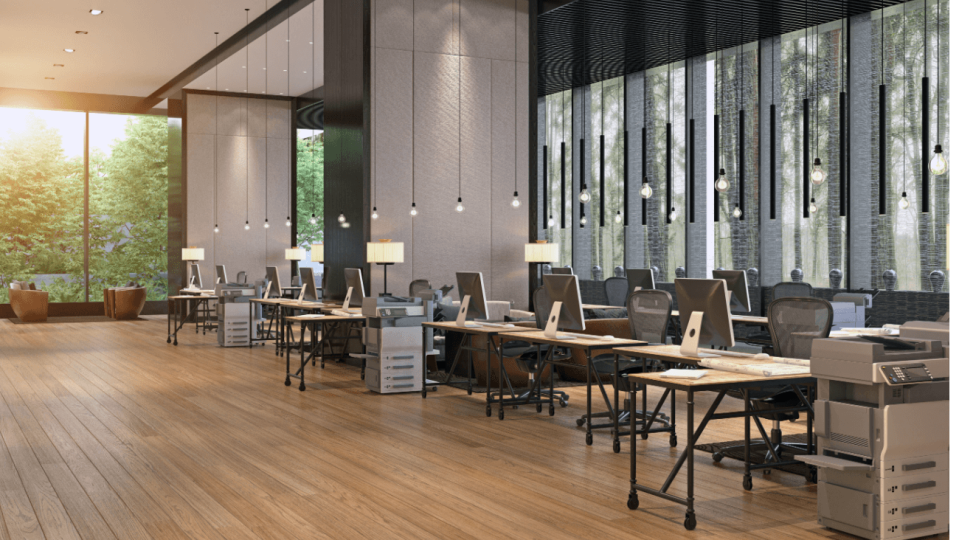Coworking-Related Web Searches Stabilize in Recent Years
As one of the defining work trends of the moment, coworking is enjoying its popularity after several decades of rapid growth. From its niche roots in the 1990s to the modern paradigm, coworking — as well as its target audience — has come a long way. So, to gauge the growth of that demand and identify where the market might be headed next, CoworkingCafe analyzed Google Search trends for coworking-related keywords for the last two decades, specifically zooming in on the last 12 months to identify where the industry might be headed. Here are the findings:
The study noted that the coworking scene developed synchronously with web search engines, although coworking was still an underground trend even as the internet broke into the mainstream in the early 2000s. Throughout that decade, coworking consolidated and began attracting more web attention, with searches beginning to pick up during and after the Great Recession.
Then, search interest continued growing, reaching all-time highs in 2011, 2015 and 2017 — with October 2017, in particular, seeing a 25% month-over-month increase in search volume. Another significant event for online interest in coworking also occurred in 2017: That year, commercial searches such as “coworking space near me” began to dislodge informative content from the first page, meaning that more internet users were interested in actually buying memberships, rather than just learning what coworking was about. Notably, the expansion of coworking around this time was mostly centered around WeWork.
Of course, COVID lockdowns were the first true challenge faced by the industry as home offices and couches replaced cubicles and coworking offices. Naturally, search interest dropped in 2020, but the industry rapidly traversed the dip and 2021 presented another all-time high in search interest as remote workers began to long for a change of space and professional work environments after more than a year of working from home.
Since then, search interest for coworking has mostly stabilized with some limited seasonal influence, indicating that the industry is stabilizing as it enters the mainstream with multiple successful operators and quality tenants. More precisely, Washington, D.C.; Hawaii; and Colorado recorded the most searches for coworking.
Looking at another coworking-related keyword, “shared office space,” the study noted similar seasonal trends, with a peak in July and lower levels toward the beginning and end of the year. However, despite commonly being used as a synonym for the concept of coworking, the “shared office space” keyword had an average search interest rating of 59 out of 100 throughout the year, while the average rating of the “coworking” keyword was 81. Other more specialized keywords — such as “shared office space” — experienced similar volatility throughout the year, with New York City being home to the most interest for that keyword in particular. Here are some of the nation’s top coworking markets where any entrepreneur, remote worker or team is sure to find what they’re looking for in terms of coworking:
- coworking offices in Houston
- coworking offices in Manhattan
- coworking offices in New York City
- coworking offices in Los Angeles
- coworking offices in Dallas
- coworking offices in Chicago
- coworking offices in Austin
- coworking offices in Charlotte
- coworking offices in Boston
- coworking offices in Atlanta
- coworking offices in Miami
- coworking offices in Irvine
- coworking offices in Phoenix
- coworking offices in San Francisco
- coworking offices in Seattle
- coworking offices in Las Vegas
- coworking offices in Denver
- coworking offices in Washington, D.C.
- coworking offices in San Diego
- coworking offices in Philadelphia
- coworking offices in San Jose
Meanwhile, searches for “virtual space” were relatively consistent throughout the year, averaging a score of 80. This may highlight the growing popularity of renting a virtual space for the purposes of a prestigious business address and other included amenities. In this respect, East Coast regions with large shares of startups featured the most interest for virtual office space. At the same time, searches for “private office space” were similarly volatile, like the previously mentioned specialized searches.
For the full study and methodology, check out CoworkingCafe’s study of web search trends in coworking.

